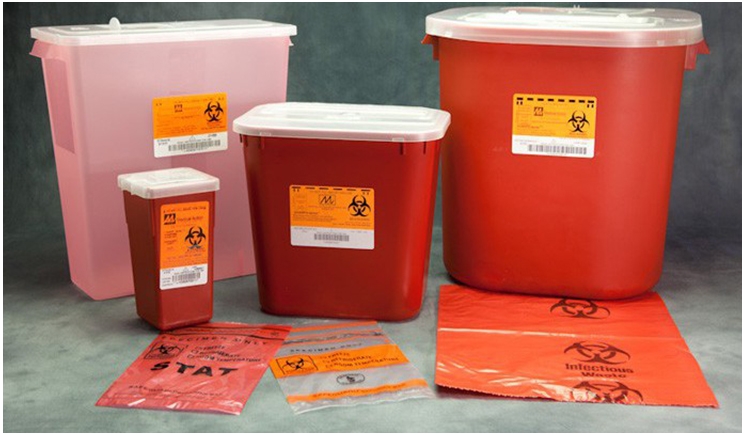
Busy practices see a large number of patients on a daily basis. Patients come and go virtually the whole day. Their treatment ranges from simple routine checkups, fillings, cleanings, and polishing to implants, extractions, and root canals.
Consequently, a variety of clinical waste accumulates. Clinical waste or bio waste includes wholly or partly human or animal tissue, bodily wastes, pharmaceutical products, syringes, needles, swabs, and so on. Other common dental wastes include x-ray fixer and developer as well as gypsum found in dental molds.
Waste poses a serious problem to practices that need to work out a way to dispose of these often hazardous materials without any detrimental impact on the environment. Wastes from all healthcare facilities include dangerous substances that need to be disposed safely.
Fortunately, health and safety protocols are set to guide disposal activities. Practices should adhere to these guidelines to avoid compliance issues.
Managing Amalgam Waste
Amalgam is used as a restorative material in dental practices. It consists of several chemicals that mercury holds together. Mercury is a dangerous chemical that can enter the environment through scrap, vapors, or waste water. Clinical waste containing amalgam must not be disposed of in the sharps container, in the garbage, or down the drain.
A December 2016 federal regulation required all dental practices to be fitted with amalgam separators, which capture mercury in waste water and prevent it from seeping into the ground. The devices are found to be effective in capturing 95% of amalgam particles. The separators should be fitted to the dental chair as well as the waste water sinks to prevent untreated water from getting into the environment.
Dental Waste Containing Silver Is Hazardous
Waste that includes silver typically can be found in dental practices. For example, silver is present in high quantities in x-ray fixer and developer. Due to wastewater treatment processes, silver thiosulphate converts into silver sulfide, which can go down the drain (this is illegal) and settle in sludge. This, in turn, affects aquatic life and the environment adversely.
A silver recovery unit will help salvage silver from waste and allow for the disposal of used x-ray fixer. Used developer can be disposed of down a drain that is connected to a publicly owned treatment works.
The waste, including used x-ray film, can be collected by biomedical waste disposal companies or by reclamation companies. Alternatively, dental practices can consider switching to digital equipment to avoid the use of x-ray machines.
Waste Containing Lead Should Be Addressed
Dental practices use x-ray packets and aprons that have a high concentration of lead in them. If they aren’t disposed of properly, they will end up in the landfill. Lead can then leach into the soil and groundwater and pose a serious environmental risk. Waste that includes lead should be disposed of with the help of a hazardous waste disposal company.
Bodily Wastes Also Contribute
Bodily wastes such as blood, human tissue, excretions, and other fluids have the potential to spread infections. If not disposed of properly, they also can act as a medium to breed microorganisms that further cause cross infections.
Blood-soaked gauze should be sealed in a leak-resistant red disposable bag or container with a universal biohazard symbol. You should ensure that these bags or containers will remain sealed and leak-proof during handling, storage, and transport. They should be disposed of through an approved disposal company.
Sharps
Sharps include syringes, needles, and other sharp instruments. They should be dropped into an appropriately labeled, leak- and puncture-proof, easily accessible container placed where it can be easily reached by the dentists who use these instruments. Containers should not be kept in high traffic areas, in cabinets, near wash areas, or near electric switches.
You also need a safe procedure or protocol in place to use sharp instruments properly and avoid needle-stick injuries and subsequent infections. Personal protective equipment should be made available to the staff wherever required.
Disinfectants and Other Chemicals
Sterilizing agents are typically classified as hazardous waste and must be disposed of as stipulated. Other chemicals and disinfectants used in dental practices also should be prevented from getting into landfills.
Use non-chlorinated plastic containers instead of PVC to minimize the environmental impact of using plastic. These containers can be safely disposed of in the solid waste stream.
Also, halogenated sterilants affect the environment adversely. It is a bad idea to pour ignitable sterilants in the drain since they can explode. Similarly, formaldehyde sterilants shouldn’t be disposed in the drain either. Pouring sterilants directly into a septic system can potentially disturb the balance of bacteria that normally break down wastes.
It is important that you speak to your biomedical waste disposal company and find out the best recommended practices. Also, use steam or dry heat for sterilizing purposes to reduce dependence on harmful chemicals.
Make Sure You Are Compliant
Your dental practice should maintain all of its paperwork in an up-to-date and meticulous manner. It is the waste producer’s responsibility to manage the hazardous waste and prevent environmental contamination.
You should ensure that you document the transfer, handling, and treatment of waste. The waste disposal company you work with should be registered and have all the necessary licenses and permits. A contractor that can provide proof of compliance is recommended for all dental practices.
Conclusion
Dental waste management is an important aspect of dental practice management. Ensure that you follow all of the recommended guidelines and regulatory protocols to avoid lapses.
Dr. Harrison is a licensed general dentist at Millennium Dental with more than 16 years of experience in dental implants, oral cancer screenings, periodontal/deep cleaning, wisdom tooth extraction, and more. For more information, email her at millennium@millenniumdds.com.
Related Articles
What Every Dentist Needs to Know About the New Amalgam Regulations
Ensure Best Practices for Infection Control in Your Dental Office
Is Your Dental Office Waste Handler Part of the Mob?











